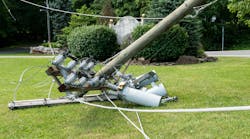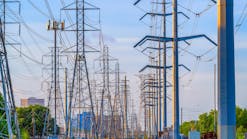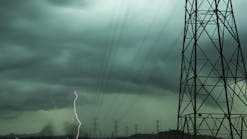Thirteen, fourteen and sixteen: Those are the number of days it took to restore power to 95% of residents following hurricanes Sandy in New Jersey, Wilma in Florida, and Rita in Texas, respectively. Though a significant improvement from Hurricane Katrina—which knocked out power for most Louisiana residents for at least 23 days—even a few days without power can be debilitating and puts vulnerable populations at risk.
Following a major storm, the rehabilitation effort can be daunting. The Edison Electric Institute estimates that 67,000 people worked to restore power to the 8.5 million homes and businesses over 21 states that fell victim to Hurricane Sandy’s deadly mix of rain, wind and snow. Crews worked around the clock to repair the damage left in the storm’s wake. In total, New Jersey’s largest utility removed 41,000 trees, replaced 2,500 poles and installed 1,000 new transformers in an effort to serve its central mission: deliver reliable power to its residents.
And still, the Tri-State’s rehabilitation effort can be considered effective and efficient when compared to the storm recovery of other localities. Like in Puerto Rico where, after more than five years since Hurricane Maria tore through the island, its grid infrastructure is still reeling.
The Old Way
Historically, utilities prioritize repairs by the number of customers affected. Damage assessment and repair begin as soon as crews can safely get into the field. Depending on the storm, this can be hours or days. Inspection is done manually on cherry-picking trucks and the damage is analyzed by utility engineers and technicians and then addressed appropriately, one at a time.
This approach takes careful diligence and time, even for the most experienced line workers. Fast forward to 2023 and utilities are exploring a new way to inspect and repair grid infrastructure in the wake of devastating storms. One that enables power to be restored more quickly and with less danger to utility employees.
AI Exploring New Terrain
Drones and small, fixed-wing aircrafts are proving to be lucrative investments for utility companies. More quickly than humans, drones can survey and capture previously unnavigable terrain following a storm. The easily maneuverable drone can get up close to the damage, allowing utility engineers to discern which repairs are needed, without trekking over potentially dangerous downed lines and high water.
When paired with an AI tool that ingests image data and identifies anomalies at scale, a rehabilitation plan can come to fruition quickly and with little manual intervention. Such technology, which is already being used to identify potentially dangerous damage in power lines and substations, has the potential to quicken the time to restoration for millions of Americans following major weather events. Consider these 3 ways that AI is improving storm restoration response:
Reinventing the Rebound
When deployed quickly and effectively, AI technology has the power to significantly reduce the time that utility customers are without power, potentially saving lives and helping ease consumer fears that their routines may be disrupted as major weather events occur more frequently. Specifically, it is helping utilities solve these challenges.
- Priority Indexing: Following sustained high winds, utility poles, lines and/or equipment are often severely damaged. In the aftermath of an event, it can be difficult to discern which major problem to address first. AI can assess the health of utility infrastructure using advanced image processing technology and assign a “priority score”. Crews can then more easily determine which repairs to address first.
- Route Optimization: After a storm, it can be helpful to have a bird's eye view of the damage. Drones can help map the best repair route that keeps crews safe and restores power efficiently.
- Immediately Actionable Data: Drones and fixed camera technology help utility companies track the evolving health of their assets in near real-time. As images are captured following a major weather event, AI technology produces condition data related to utilities’ work management and asset systems, enabling repair crews to respond quickly without having to assess images manually to produce written reports on the damage.
Finally, a strong AI-powered data engine can help improve response times, over time. The data in aggregate can help predict which assets are most likely to fail during a severe storm, identify patterns storm after storm, and predict with confidence where repairs should happen first. AI’s strength is in its learnings that compound over time.
For utilities that seek to uphold quality service and deliver reliable energy to their communities, AI-powered technology is a natural step toward building a technology-forward, disaster-ready future.
Todd Barber is director of Business Development at Buzz Solutions.


